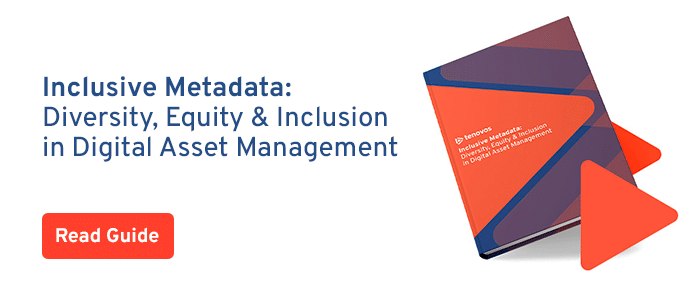
Digital asset management systems (DAMs) are no longer just for storage. Today, modern DAMs are able to publish and track assets through their entire lifecycle. Asset tracking through your DAM can be the secret weapon of your marketing strategy—helping your team identify gaps, reuse content, and optimize their efforts.
In this article, we’ll explain how modern DAMs are becoming a hub for the full asset lifecycle, plus three invaluable benefits of DAM tracking for your content strategy.
The Power of Asset Tracking Through Your DAM
Now you may be familiar with your DAM’s ability to store and manage assets. You may even have a DAM that offers approval workflow features within its platform. But today’s DAMs now give you the power to publish your assets to channels like social, ecommerce, and the web, as well as track them across every change and channel. From the moment an asset is uploaded to the DAM a “context path” is created to track the asset’s history during its lifecycle—from its historical versions, accessed users, published locations, and more.
In the past, your marketing team would download assets from the DAM to be manually published—leaving a broken trail of data behind—you’d be unable to see where your assets ended up or how they were being used. By creating a context path you can access directly from your DAM, a tool that was once archival becomes a titan of asset data, ready for your creative teams to draw useful insights.
How DAM Tracking Data Works for You
Content tracking through your DAM creates data. Data leads to insights. And insights lead to opportunities for optimization. Consider the example of a brand that chooses to publish product images to various websites. In the past, the team would download those assets from their DAM and upload them to their website manually. If they needed to know which product images from a photoshoot were actually used, or whether an old image was still floating around on their website, they’d have to go searching for it manually too.
Now with the power of DAM tracking, marketing teams can easily search for any assets published from the DAM by channel, collection, or any relevant search tag. Your marketing team can easily see how images from any given brand, campaign, or launch are being used, who published them, and when they were published. With this information, they can better understand the current state of their content strategy and identify where the gaps exist (one of three benefits we’ll dig into in the next section).
3 Benefits of Tracking in Your DAM
A DAM is the only system that cuts across every area of the asset lifecycle—you can approve, store, manage, publish, and track your content without leaving the platform. With tracking innovations, a modern DAM becomes a hub of your tech ecosystem.
Here are three benefits of tracking assets in your DAM:
Identify Gaps in Publishing
Do you want to know what content your retail partners are sharing? How about more opportunities to templatize frequently used assets? Do the same types of content get shared to the same channels? Go straight to the customizable tracking dashboard in your DAM to compare the existing state of your content with your goals. Asset tracking allows teams to more easily identify where content gaps in your campaigns exist or new opportunities for content.
Use Data to Inform Content Reuse
By tracking where content ends up, you know exactly which channel data to analyze and figure out how assets are performing. Consider connecting your data applications and repositories with your DAM to measure and maintain your asset data. Many DAMs have integrations with creative suites, product information management systems (PIMs), content delivery networks (CDNs), and content management systems (CMSs).
Explore how your DAM tracks asset and campaign performance to measure the impact on conversion and revenue. If that isn’t something your DAM currently does, we do. From there, you can determine which high-performing assets can be reused or repurposed for future campaigns.
Need content reuse inspiration?
Check out our lookbookAssist in Optimizing Content
When you know what channels your content is being used on, and where the gaps are, you can better optimize your budget and fix inefficiencies. You may discover through your asset tracking dashboard that a large-scale photoshoot only reaped a few usable images for your campaigns—why spend thousands on creating assets when only a handful are used? Next time, you can adjust the creative briefs, planning, and budget to reflect a more focused approach (without wasting money).
Similarly, you can begin evaluating content performance by channel in your DAM. With asset tracking, you can easily determine where all your assets were published—from there, your marketing teams can compare performance data to other channels, assets, or campaigns. If you know photo shoot images were used across all of your channels, but they didn’t perform as well on one versus another, you can analyze why and optimize for next time. Content tracking can help your marketing team use their time and resources on the right content.
The Future of DAM is Here (and Getting Better All the Time)
New features in modern DAMs (like Tenovos) make publishing and tracking easier than ever, with these platforms becoming more and more sophisticated all the time. Today, your marketing team can better identify content gaps, understand where to reuse assets, and optimize their resources with the tracking data a modern DAM collects. The present and future of DAM is bright. Don’t get left behind.



